 Browns Archive
Browns Archive  Browns Game Vault: 11/13/72. Phipps-to-Pitts. Mike Phipps Looking Like the Future
Browns Game Vault: 11/13/72. Phipps-to-Pitts. Mike Phipps Looking Like the Future
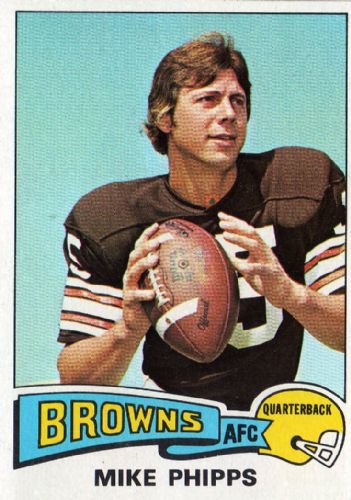 It can be easy for a writer to compile a list, and perhaps flesh out each item with a sentence or two. And that’s fine, unless it becomes a rehash of what a half dozen other writers have already put out there. Actually, I say that’s fine, but that’s assuming the list represents some minimum level of forethought.
It can be easy for a writer to compile a list, and perhaps flesh out each item with a sentence or two. And that’s fine, unless it becomes a rehash of what a half dozen other writers have already put out there. Actually, I say that’s fine, but that’s assuming the list represents some minimum level of forethought.
If you do a web search for “cleveland browns draft busts”, you’ll find a list… of lists. Tim Couch is the whipping boy of many of these. For reasons we have previously explored, he was not a bust (and I am sure we will revisit this theme in the future). He was the poster child for why agents and players’ fathers sometimes try to game the system to leverage their players/sons into a “good situation”. Think Eli Manning, who was drafted by the San Diego Chargers and immediately traded to the New York Giants. Tim Couch performed more or less as an average quarterback, amid a historically horrible “situation”. And as we know, his era ended badly for him in Cleveland. (Please don’t misunderstand my take on Couch. I am sympathetic… to Browns fans. I neither blame nor begrudge financially secure professional athletes who have the deck stacked against them playing a game they chose according to their free will. Neither do I worship such players by wearing their jersey. There are there for me- not vice versa.)
So who was the biggest draft bust in Browns history? Admittedly, any opinion would be from a subjective viewpoint, based on subjective criteria. I would personally only consider players chosen in the first round who never were very productive, but not because of their “situation”.
Courtney Brown comes to mind. Brown flashed incredible talent with the expansion Cleveland Browns- I particularly recall a game at Chicago when he played like Lawrence Taylor- but he could never stay healthy enough to make much of an impact. But while injuries to any draft pick may render him a bust, the execution of the pick may have been sound.
It’s much more interesting to narrow the scope of consideration to those players who proved they just weren’t good enough to warrant being chosen with a high pick. Mike Junkin merits consideration. The Duke linebacker was labeled a “mad dog in a meat market” by Browns scout Dom Anile. In a move that puzzled even the team’s staff (which had future Bills star Cornelius Bennett at the top of their board), head coach Marty Schottenheimer selected Junkin with the Browns’ first pick. Compounding the Browns’ bungling was the recent trade of talented linebacker Chip Banks (sure, Banks was a bit of a high-maintenance head case. In my opinion, he was also mismanaged). Here were the Browns, with an influx of quality former USFL players fortifying their roster (Mack/Fike/Minnifield/M. Johnson/McNeil/offensive coordinator Lindy Infante), now poised to win the Super Bowl by the late 1980s. The untimely death of star safety Don Rogers and the selection of Junkin began the derailment of those plans. It was already apparent in camp, prior to Mike Junkin’s rookie season  of 1987: he was a colossal draft bust.
of 1987: he was a colossal draft bust.
To be fair to Schottenheimer, he was not alone in making poor personnel decisions. Paul Brown himself once let future Hall of Fame quarterback Len Dawson go. And Bill Belichick selected Craig Powell in the first round out of Ohio State in the 1995 draft. It is not known if Belichick previously conferred with John Cooper. The Buckeye coach readily offered his opinion to reporters after the draft: Powell was not ready. So, Jon Bon Jovi’s buddy’s player procurement skills could be as puzzling as his affinity for lame, repetitive rock anthem singers.
In 1970, the Cleveland Browns were coming off two straight trips to the NFL Championship Game. Veteran quarterback Bill Nelsen’s rickety knees had the Browns searching for a replacement. In one of the worst moves ever made by a Cleveland sports team, the Browns traded immensely popular, future Hall of Fame wide receiver Paul Warfield to the Miami Dolphins. In return, they acquired the right to draft the quarterback out of Purdue, Mike Phipps.
Nelsen remained the starting quarterback through the 1971 season, as Phipps observed from the sidelines. The 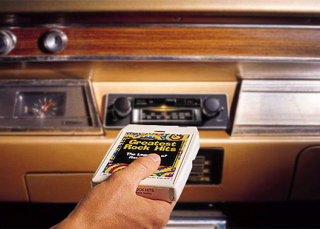 disappointment of a 7-7 1970 season faded as Nelsen led the team to a 9-5 record and a division title in ’71. Unfortunately, that season ended with a resounding 34-0 playoff defeat to the visiting Baltimore Colts.
disappointment of a 7-7 1970 season faded as Nelsen led the team to a 9-5 record and a division title in ’71. Unfortunately, that season ended with a resounding 34-0 playoff defeat to the visiting Baltimore Colts.
Let’s have some fun. We’ll take a brief trip through the ol’ eight-track cassette library from 1972. It wasn’t nearly the incredible year for music that 1968 was, but what was? The year of Nixon vs. McGovern, the Watergate scandal, the Munich Olympics, and the release of the Pong video game boasted releases of some great rock-‘n-roll of its own. I know- let’s do a list!
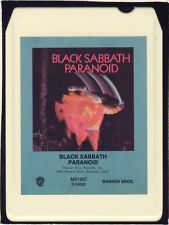 “Iron Man”, Black Sabbath. From the Paranoid cassette. Ozzy Osborne stood behind a moving fan for the opening’s declaration: “I am Iron
“Iron Man”, Black Sabbath. From the Paranoid cassette. Ozzy Osborne stood behind a moving fan for the opening’s declaration: “I am Iron 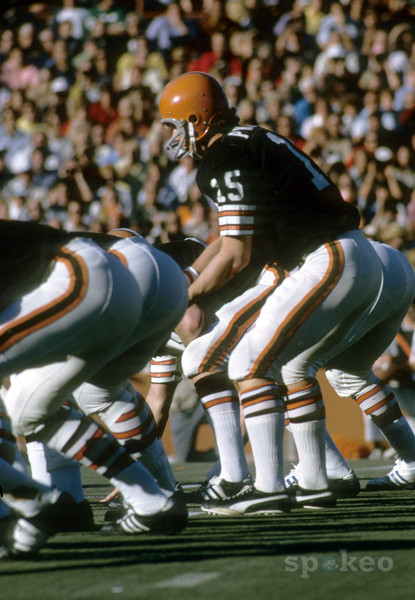 Man”. The subject of the song is not related to the comic book hero. He is a time traveler who sees the coming apocalypse. He tries to warn the people of his time. They mock him, and he loses the ability to speak. Enraged, he exacts revenge on the world, triggering the destruction he’d warned about. “War Pigs” was another great song on this eight-track.
Man”. The subject of the song is not related to the comic book hero. He is a time traveler who sees the coming apocalypse. He tries to warn the people of his time. They mock him, and he loses the ability to speak. Enraged, he exacts revenge on the world, triggering the destruction he’d warned about. “War Pigs” was another great song on this eight-track.
In 1972, Mike Phipps became second-year head coach Nick Skorich’s starting quarterback in Week Six. He had not shown much promise in his limited opportunities to play, but it was time for Bill Nelsen to become the backup. He’d led the Browns to a stumbling 2-3 start, and they struggled to score points. Future Hall of Famer Leroy Kelly was still a productive back, but the receivers who were attempting to replace Warfield and Gary Collins were unproven and were prone to dropping the ball. The Browns defense, however, was among the best in the NFL.
“Tiny Dancer” and “Levon”, E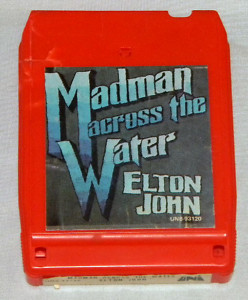 lton John. From the Madman Across the Water cassette. Elton John has been around a loooooong time, and his library is packed with classic 1970s ‘Album Oriented Rock’ nuggets like these. This was John’s first eight-track where he played only the piano (Yes keyboardist Rick Wakeman played organ on Levon). Guitarist Davey Johnstone first joined John’s band for this classic release.
lton John. From the Madman Across the Water cassette. Elton John has been around a loooooong time, and his library is packed with classic 1970s ‘Album Oriented Rock’ nuggets like these. This was John’s first eight-track where he played only the piano (Yes keyboardist Rick Wakeman played organ on Levon). Guitarist Davey Johnstone first joined John’s band for this classic release.
A huge Browns win came in Week 9. The now-5-3 Browns traveled to San Diego, riding a three-game winning streak. In a nationally televised game, Mike Phipps led the Browns on a 67-yard drive for a score in the second quarter. Phipps sneaked it in from the one, for a 7-3 lead. Veteran Chargers quarterback John Hadl answered in the third quarter with a touchdown pass of his own.
Phipps wasn’t inspiring anyone to clear out space for him in the Pro Football Hall of Fame, but he warmed up as the game progressed. It helped that amid a couple of horrible drops, receiver Frank Pitts also hung onto a few. With the Browns down 14-10 to start the fourth quarter, Pitts took a screen pass from Phipps and slashed for 18 yards. The Browns were reeling off several first downs, until Kelly ran for 6 yards from the San Diego twelve. He then ran up the middle for 4 more. Ken Brown, subbing for the injured Bo Scott, punched it in.
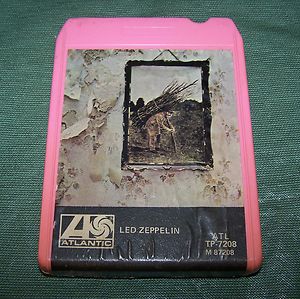 “Black Dog”, “Rock and Roll”, and “Stairway to Heaven”, Led Zeppelin. From the cassette known as Led Zeppelin IV, or ZOSO. Wow. Maybe due to hearing them so often, I wouldn’t even name these tunes as my favorites from this album. One thing I’ve always wanted to do is rearrange Zeppelin’s songs and group them together by recording session. Some of the songs from the ZOSO session were “Night Flight”, “Down by the Seaside”, and “Boogie with Stu”, which all made the Physical Graffiti album.
“Black Dog”, “Rock and Roll”, and “Stairway to Heaven”, Led Zeppelin. From the cassette known as Led Zeppelin IV, or ZOSO. Wow. Maybe due to hearing them so often, I wouldn’t even name these tunes as my favorites from this album. One thing I’ve always wanted to do is rearrange Zeppelin’s songs and group them together by recording session. Some of the songs from the ZOSO session were “Night Flight”, “Down by the Seaside”, and “Boogie with Stu”, which all made the Physical Graffiti album.
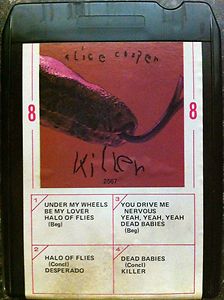
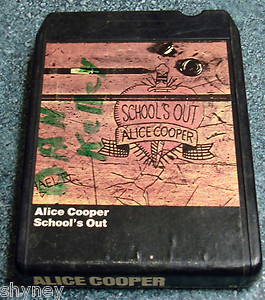 “Under My Wheels” and “School’s Out”, Alice Cooper. From the cassettes Killer and School’s Out, respectively. School has been blown to pieces? Listening as a ten year old? Shoot. We ate that stuff up. Hm, I think I’ll get on YouTube and pull up “Under My Wheels” right now. It roooooocks. (Saw a YouTube comment: the perfect ringtone! "TELEPHONE IS RINGIN'".)
“Under My Wheels” and “School’s Out”, Alice Cooper. From the cassettes Killer and School’s Out, respectively. School has been blown to pieces? Listening as a ten year old? Shoot. We ate that stuff up. Hm, I think I’ll get on YouTube and pull up “Under My Wheels” right now. It roooooocks. (Saw a YouTube comment: the perfect ringtone! "TELEPHONE IS RINGIN'".)
After the Browns and the Chargers exchanged punts (by the way, Don Cockroft was both the Browns’ punter and their kicker), San Diego began a drive at their thirty nine yard line. The Chargers offense began eating up chunks of yardage, steadily marching to the score- and a 17-14 lead with 1:21 left in the game.
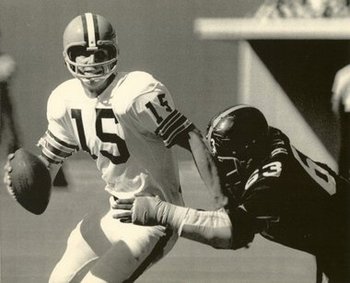 The game, the winning streak, and a chance to play for a share of first place against the Pittburgh Steelers in Week 10 rode on the shoulders of Mike Phipps. The ensuing kickoff had been taken at the Browns’ ten yard line by returner Billy LeFear, who advanced the ball to the Browns’ thirty six. 1:01 left. How would the young quarterback respond?
The game, the winning streak, and a chance to play for a share of first place against the Pittburgh Steelers in Week 10 rode on the shoulders of Mike Phipps. The ensuing kickoff had been taken at the Browns’ ten yard line by returner Billy LeFear, who advanced the ball to the Browns’ thirty six. 1:01 left. How would the young quarterback respond?
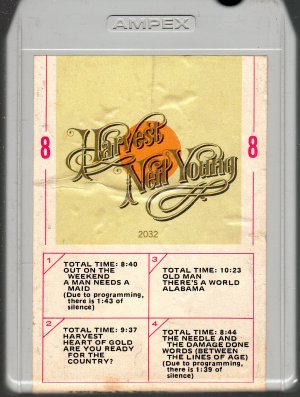 “Heart of Gold” and “Old Man”, Neil Young. From the Harvest cassette. Young was doing just fine, post-CNSY, thank you very much. Although each member of that band joined him on this release. Also appearing were Linda Ronstadt (the backup singer on “Heart of Gold”), and James Taylor, who played the banjo on “Old Man”. Over the next 30+ years, any beginner guitarist who was transitioning into an intermediate player would play “Heart of Gold”. “Heart of Gold”, Pink Floyd’s “Wish You Were Here”, and Paul McCartney’s “Blackbird”.
“Heart of Gold” and “Old Man”, Neil Young. From the Harvest cassette. Young was doing just fine, post-CNSY, thank you very much. Although each member of that band joined him on this release. Also appearing were Linda Ronstadt (the backup singer on “Heart of Gold”), and James Taylor, who played the banjo on “Old Man”. Over the next 30+ years, any beginner guitarist who was transitioning into an intermediate player would play “Heart of Gold”. “Heart of Gold”, Pink Floyd’s “Wish You Were Here”, and Paul McCartney’s “Blackbird”.
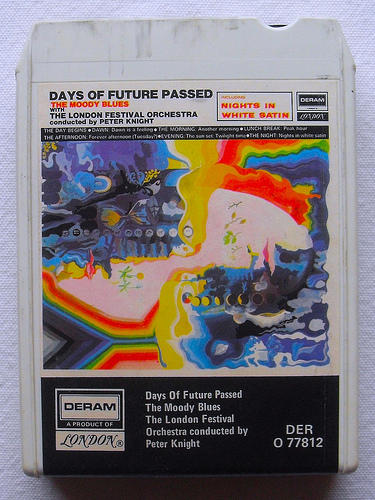 “Nights in White Satin”, Moody Blues. From the Days of Future Passed cassette. This song was first released in 1967, and the seven-minute length limited its airplay. In 1972, after the success of long tunes like the Beatles’ “Hey Jude” and Derek and the Dominoes’ “Layla”, it was released again. Performed with the London Festival Orchestra. A tapestry of sound, with a poem at the end, recited by the drummer. And then, finally, a gong! Here’s the poem, “Late Lament”:
“Nights in White Satin”, Moody Blues. From the Days of Future Passed cassette. This song was first released in 1967, and the seven-minute length limited its airplay. In 1972, after the success of long tunes like the Beatles’ “Hey Jude” and Derek and the Dominoes’ “Layla”, it was released again. Performed with the London Festival Orchestra. A tapestry of sound, with a poem at the end, recited by the drummer. And then, finally, a gong! Here’s the poem, “Late Lament”:
Breathe deep the gathering gloom,
Watch lights fade from every room.
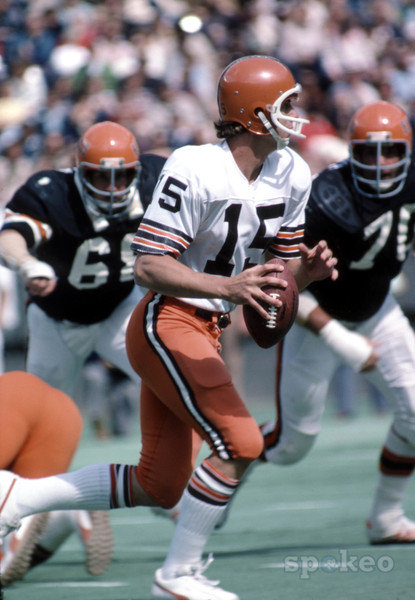 Bedsitter people look back and lament,
Bedsitter people look back and lament,
Another day's useless energy spent.
Impassioned lovers wrestle as one,
Lonely man cries for love and has none.
New mother picks up and suckles her son,
Senior citizens wish they were young.
Cold hearted orb that rules the night,
Removes the colours from our sight.
Red is grey and yellow white.
But we decide which is right.
And which is an illusion?
Phipps connected with Ken Brown for gains of 7 yards. Then, again, for 19 yards. The ball rested on the San Diego thirty six yard line. Phipps dropped back again, as Frank Pitts streaked toward the end zone. Phipps let the ball fly- and it hit Pitts in stride! The receiver did not drop this one. The Browns defense held for the final 41 seconds, and the stunned San Diego fans filed out of the stadium quietly.
Prior to the next game, Frank Pitts made an appearance signing autographs at the Sears in the Great Lakes Mall, in Mentor, OH. A certain ten-year-old boy walked up and handed him a newspaper. It showed a large, smudged, black-and-white photo of Pitts catching the touchdown pass in San Diego. The headline read, “PHIPPS TO PITTS”. Pitts took the newspaper, and flashing a genuine smile, issued a heartfelt “thank you” and signed it. The paper was promptly lost or discarded by the ten-year-old, but the memory lives.
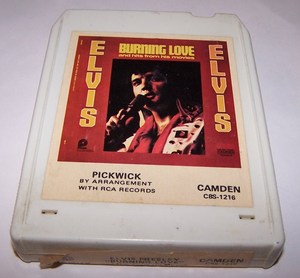 “Burning Love”, Elvis Presley. From the Burning Love and Hits from his Movies Part 2 cassette. This was Elvis’ last hit song, rising to #2 on the charts behind Chuck Berry’s novelty song “My Ding a Ling”. Elvis was said to have not liked “Burning Love”, but he gamely performed it due to its popularity. It was included in the wildly successful Aloha From Hawaii concert, which in January of 1973 was the first global concert satellite TV broadcast. It was huge.
“Burning Love”, Elvis Presley. From the Burning Love and Hits from his Movies Part 2 cassette. This was Elvis’ last hit song, rising to #2 on the charts behind Chuck Berry’s novelty song “My Ding a Ling”. Elvis was said to have not liked “Burning Love”, but he gamely performed it due to its popularity. It was included in the wildly successful Aloha From Hawaii concert, which in January of 1973 was the first global concert satellite TV broadcast. It was huge.
The Browns beat the Steelers at home in Week Ten, for a share of the division lead. Their winning streak would stretch to six, before a loss at Pittsburgh. Winning the last two games of the regular season put the 10-4 Browns into the playoffs. They traveled to Miami, and led in the fourth quarter. A story for another day- the Dolphins (and Paul Warfield) came back to win that game, on their way to an undefeated season.
Mike Phipps was never able to escape the shadow of the Warfield trade. It was observed that he never seemed to have an intense competitive spirit. In contrast to Bill Nelsen, he was not a charismatic leader. He could run well, but his arm was subpar. Nick Skorich allowed that Phipps was not very quick to read defenses. In 1975, coach Forrest Gregg was counting on Phipps to lead his offense. He was effective in the opening game, but got injured while extending a play, struggling for extra yardage. Brian Sipe eventually filled the role of charismatic leader on a Browns playoff team.
But have no fear: when Mike Phipps was finally traded, in 1977, it was for the Chicago Bears’ top pick in 1978. That pick was converted into… another Hall of Famer, tight end Ozzie Newsome from Alabama.
Thank you for reading. Sources included the Cleveland.com Browns game story database; the Browns website history pages; Tales from the Browns Sideline, Tony Grossi; Wikipedia.
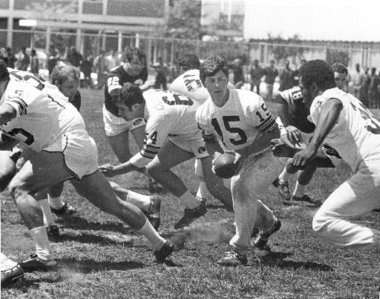
- NBA Announces 2013-2014 Schedule
- Browns Ink Sharknado
- Sharknado A No-Show For Rookie Camp
- Trent Richardson Out Until Training Camp
- Browns Sign Brandon Jackson
- Carrasco Suspended Eight Games
- Browns Add to Wide Receiver Depth with David Nelson
- Browns Need to Learn from Past Draft Mistakes
- Browns Release Chris Gocong and Usama Young
- Browns Missing on Grimes Disappointing, But Not The End
The TCF Forums
- Official- Browns Coach Search/Rumors
mattvan1 (Tuesday, January 21 2014 1:19 PM) - Movies coming out
rebelwithoutaclue (Tuesday, January 21 2014 12:56 PM) - 2015 Recruiting
jclvd_23 (Tuesday, January 21 2014 12:38 PM) - The 2014 Offseason Thread
Larvell Blanks (Tuesday, January 21 2014 12:25 PM) - Chris Grant's first 3 drafts
Kingpin74 (Tuesday, January 21 2014 10:13 AM) - Mike Brown
YahooFanChicago (Monday, January 20 2014 11:15 PM) - 2014 Hoops Hockey Hijinx
jpd1224 (Monday, January 20 2014 4:44 PM) - 2014 Recruiting
jclvd_23 (Monday, January 20 2014 2:26 PM) - Wish List - #4 Pick
Hikohadon (Monday, January 20 2014 1:26 PM) - #1 overall pick Anthony Bennett
TouchEmAllTime (Sunday, January 19 2014 1:28 PM)



